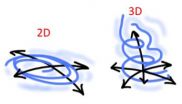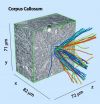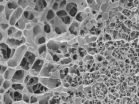(Press-News.org) Alexandria, VA – The U.S. Geological Survey's website states it in no uncertain terms: "There is no such thing as 'earthquake weather.'" Yet, from at least the time of Aristotle, some people have professed links between atmospheric conditions and seismic shaking. For the most part, these hypotheses have not held up under scientific scrutiny and earthquake researchers have set them aside as intriguing but unfounded ideas. However, in the last decade new efforts to identify effects of weather-related, or in some cases climate-related, processes on seismicity have drawn new interest.
Researchers are beginning to take a closer look at the Main Himalayan Thrust in northern India and Nepal, inland regions of Taiwan and seismically active semi-tropical regions like Haiti for evidence of weather-induced seismicity. These groups postulate that tremendous excesses of rainwater falling over short amounts of time may alter the stresses acting on faults, potentially triggering earthquakes to occur sooner than they otherwise would. How will this research affect earthquake preparedness in the future? Read the full story online at http://www.earthmagazine.org/article/blame-it-rain-proposed-links-between-severe-storms-and-earthquakes.
###Make sure to check out this story and more in the November issue of EARTH Magazine. Pluto takes its revenge; a new catalyst shows promise for methane oxidation; and geoscientists reveal their own "Earth telescope" all in this month's issue.
Keep up to date with the latest happenings in Earth, energy and environment news with EARTH magazine online at http://www.earthmagazine.org/. Published by the American Geosciences Institute, EARTH is your source for the science behind the headlines.
The American Geosciences Institute is a nonprofit federation of geoscientific and professional associations that represents more than 250,000 geologists, geophysicists and other earth scientists. Founded in 1948, AGI provides information services to geoscientists, serves as a voice of shared interests in the profession, plays a major role in strengthening geoscience education, and strives to increase public awareness of the vital role the geosciences play in society's use of resources, resiliency to natural hazards, and interaction with the environment.
EARTH: Earthquake? Blame it on the rain
2012-10-23
ELSE PRESS RELEASES FROM THIS DATE:
Study shows New Jersey's decal for young drivers reduced crashes
2012-10-23
Philadelphia, October 23—A new study shows that New Jersey's law requiring novice drivers to display a red decal on their license plates has prevented more than 1,600 crashes and helped police officers enforce regulations unique to new drivers. The first-in-the-nation decal provision went into effect in May 2010 as part of N.J.'s Graduated Driver Licensing (GDL) law. Nearly every state has a GDL law on the books, but "Kyleigh's Law," named for a teen driver killed in a 2006 N.J. crash, is the first one that requires drivers under age 21 to display their probationary status ...
Effective treatment helps Danes with personality disorders
2012-10-23
For seven years, Carsten René Jørgensen from the Department of Psychology and Behavioural Sciences at Aarhus University has collaborated with the Clinic for Personality Disorders, Aarhus University Hospital, Risskov on examining the extent to which modern psychoanalytic psychotherapy can help the Danes suffering from severe borderline personality disorders.
Among the first to examine these forms of modern psychoanalytic treatment of severe personality disorders, the study shows a clear trend; a vast majority of patients do better after a two-year course of treatment.
- ...
Improving medical research education across Europe
2012-10-23
Fostering and improving medical research education is crucial to biomedical research and clinical patient treatment, and as such it has been identified as the main challenge in every joint European Science Foundation (ESF) - European Research Medical Councils (EMRC) strategy report. A new policy report entitled "Medical Research Education in Europe" has just been published looking at crucial factors to improve medical research education throughout Europe.
The new science policy briefing report features an overview of medical researchers' training across Europe. It identifies ...
Leading European experts call for more rigorous scientific evidence for healthcare interventions
2012-10-23
Leading clinicians and health researchers from across Europe say much greater emphasis must be placed on the scientific evidence for the effectiveness of treatments and other healthcare interventions to ensure patients receive the best care available. The call is contained in a Science Policy Briefing published by the European Medical Research Councils, which also made ten key recommendations on how to improve the quality of research and healthcare in Europe.
The briefing, 'Implementation of Medical Research in Clinical Practice', says that there must be much greater ...
Biologists record increasing amounts of plastic litter in the Arctic deep sea
2012-10-23
Biologists record increasing amounts of plastic litter in the Arctic deep sea: studies confirm that twice as much marine debris is lying on the seabed today compared to ten years ago
Bremerhaven, 22nd October 2012. The seabed in the Arctic deep sea is increasingly strewn with litter and plastic waste. As reported in the advance online publication of the scientific journal Marine Pollution Bulletin by Dr. Melanie Bergmann, biologist and deep-sea expert at the Alfred Wegener Institute for Polar and Marine Research in the Helmholtz Association. The quantities of waste observed ...
Next-generation vaccines -- eliminating the use of needles
2012-10-23
Lead scientist Professor Simon Cutting, from the School of Biological Sciences at Royal Holloway, has developed the jabs through the use of probiotic spores. He carried out fundamental studies into the biology of the bacterium Bacillus subtilis which attracted the attention of microbiologists due to its ability to form spores that can last millions of years before germinating under the appropriate environmental conditions.
Professor Cutting says: "The mechanisms by which this process occurs have fascinated microbiologists for decades making it one of the most intensively ...
Turbulent flows in 2D can be calculated in new model
2012-10-23
Turbulent flows have challenged researchers for centuries. It is impossible to predict chaotic weather more than a week in advance. Wind resistance on a plane or a car cannot be calculated precisely, since it is determined by atmospheric turbulence. Now, however, researchers from the Niels Bohr Institute have succeeded in developing a statistical model that can replicate the chaotic flows and thereby provide a better understanding of the process. The research results are published in the scientific journal, Physics of Fluids.
"Without knowing the movements in detail, we ...
Quantum computing with recycled particles
2012-10-23
A research team from the University of Bristol's Centre for Quantum Photonics (CQP) have brought the reality of a quantum computer one step closer by experimentally demonstrating a technique for significantly reducing the physical resources required for quantum factoring.
The team have shown how it is possible to recycle the particles inside a quantum computer, so that quantum factoring can be achieved with only one third of the particles originally required. The research is published in the latest issue of Nature Photonics.
Using photons as the particles, the Bristol ...
A circuit diagram of the mouse brain
2012-10-23
This press release is available in German.
What happens in the brain when we see, hear, think and remember? To be able to answer questions like this, neuroscientists need information about how the millions of neurons in the brain are connected to each other. Scientists at the Max Planck Institute for Medical Research in Heidelberg have taken a crucial step towards obtaining a complete circuit diagram of the brain of the mouse, a key model organism for the neurosciences. The research group working with Winfried Denk has developed a method for preparing the whole mouse ...
Lung mucus gel scaffold prevents nanoparticles from getting through
2012-10-23
Mucus coats our airways' internal surfaces. The viscous gel humidifies the lungs and prevents viruses and other small particles like diesel soot from entering the body unchecked. Previously unclear was the extent to which such nanoparticles are able to move through the lungs' mucus. Here, the research evidence was contradictory. Scientists could not explain why, in inhaled medication development, drug nanoparticles often simply got stuck in the mucus never making it to their target destination inside the lung cells.
Now, as part of a German Research Foundation (DFG)-funded ...


